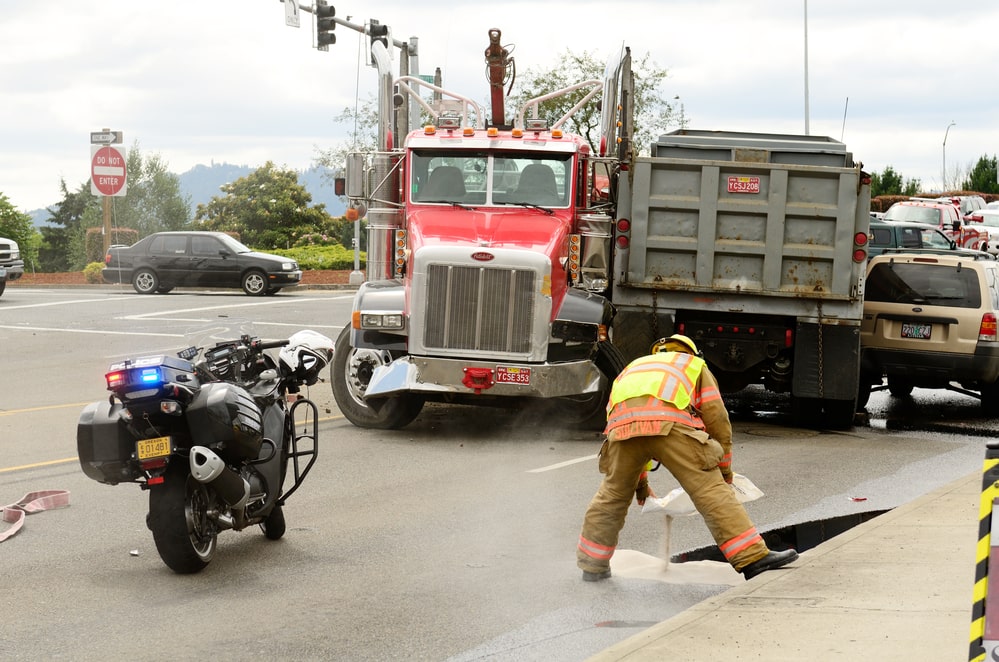
Bridge strikes involving commercial trucks may seem rare, but they can lead to significant legal and safety issues. As a truck accident lawyer can share, these incidents often happen when a truck attempts to pass under a bridge or overpass that is too low for its height. The impact can cause damage not only to the vehicle and structure but also to nearby motorists, pedestrians, and surrounding property.
When GPS Or Route Guidance Contributes To Bridge Strikes
Many commercial drivers rely on general GPS devices that do not account for bridge heights or truck-specific routing restrictions. In some cases, the trucker may be guided onto a road that is not rated for commercial traffic. This can lead to unexpected encounters with low-clearance bridges. If a trucking company fails to equip its fleet with commercial-grade navigation systems, that decision may contribute to liability.
Other times, the driver may be unfamiliar with the route or operating on an unrealistic delivery schedule. This creates pressure to take shortcuts or ignore warning signs, increasing the likelihood of an accident. Situational awareness and proper planning are critical elements of truck safety. GPS devices actually log the path and drive information, so lawyers may request this as part of a case to use as evidence.
Responsibility Of Trucking Companies And Vehicle Owners
Trucking companies must properly train drivers and plan safe routes, especially for oversized or high-clearance loads. If a company sends a truck on a route known to have restricted clearance, they may be found liable for any resulting accident. This includes making sure permits are in place and the vehicle complies with posted height regulations.
Vehicle owners also have a duty to maintain accurate information about their trucks. If the posted height on the truck is incorrect or unreadable, a driver may unknowingly attempt to pass under a structure that’s too low. Liability could be shared between the driver, vehicle owner, and employer, depending on how the failure occurred.
Government Entities And Infrastructure Issues
Sometimes, local or state governments may share responsibility if bridge clearance signage is missing, outdated, or improperly placed. Inaccurate measurements or a lack of visible warnings can leave drivers with no reasonable way to avoid a strike. According to our friends at Palmintier Law Group, some claims may involve both private and public entities, especially when signage or roadway maintenance plays a role.
Filing a claim involving a municipal or state agency introduces different rules and deadlines. These cases often require prompt legal action and adherence to notice requirements that differ from private lawsuits. An attorney will have knowledge of how public infrastructure negligence plays a role in your case.
Bridge Strike Accidents Can Cause Chain Reactions
Truck bridge strikes can create dangerous chain-reaction events. Debris from a collision may hit nearby vehicles or block multiple lanes of traffic. In some cases, overpasses suffer structural damage, prompting closures and emergency repairs. These events can escalate quickly and involve multiple parties and vehicles.
A personal injury lawyer reviewing these incidents must look beyond the initial impact. Evaluating all damage, both direct and indirect, is crucial in determining total liability. Victims may suffer injuries not from the strike itself, but from the resulting chaos, such as swerving vehicles or secondary crashes. Expert witnesses may be brought in to recreate the scene to determine fault.
When bridge strikes happen, determining fault involves technical details, route planning, and multiple stakeholders. Speak with a local attorney to learn more.
